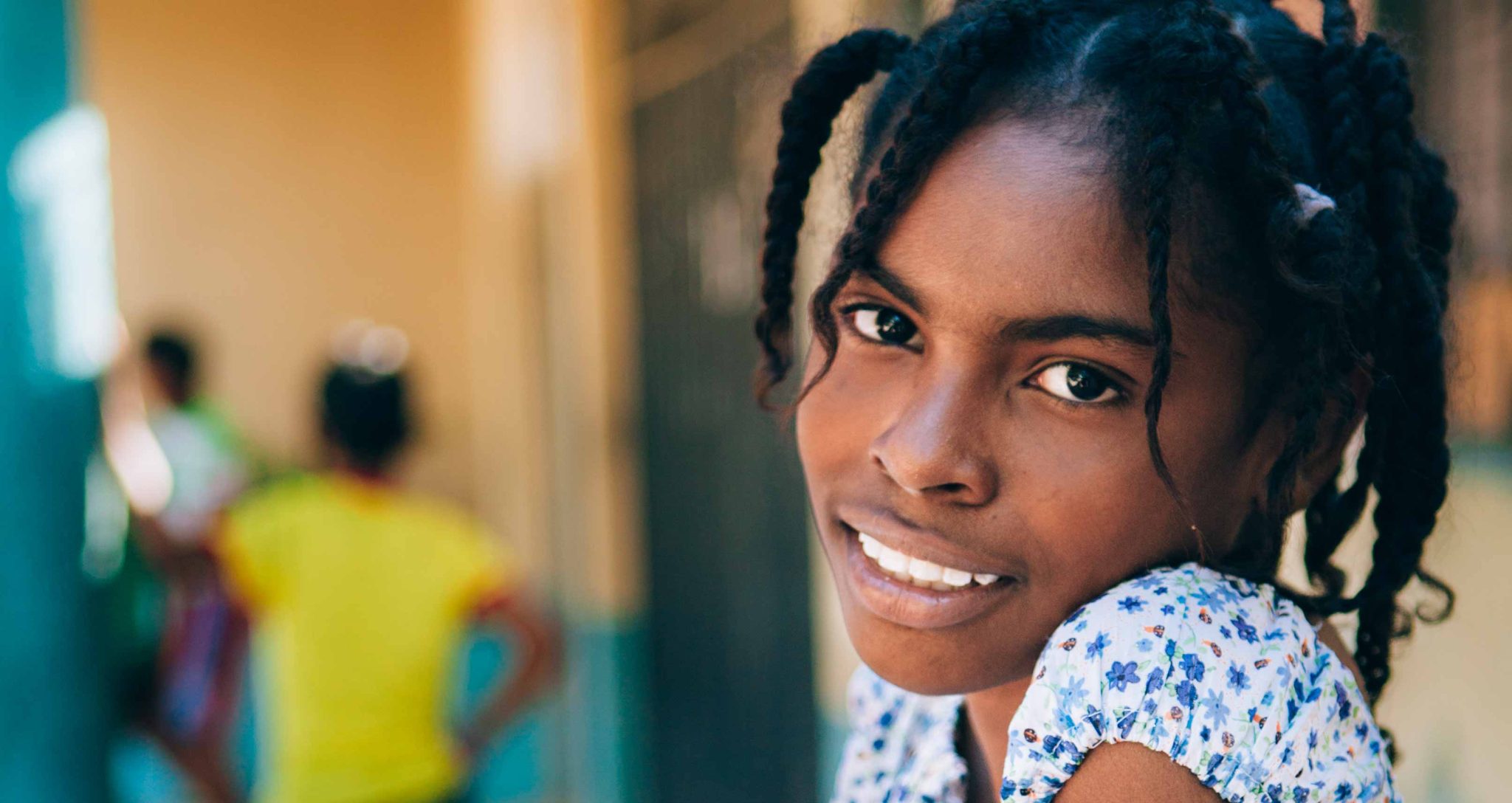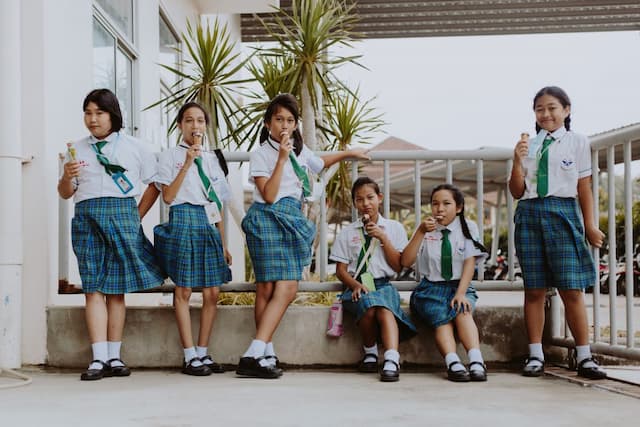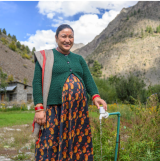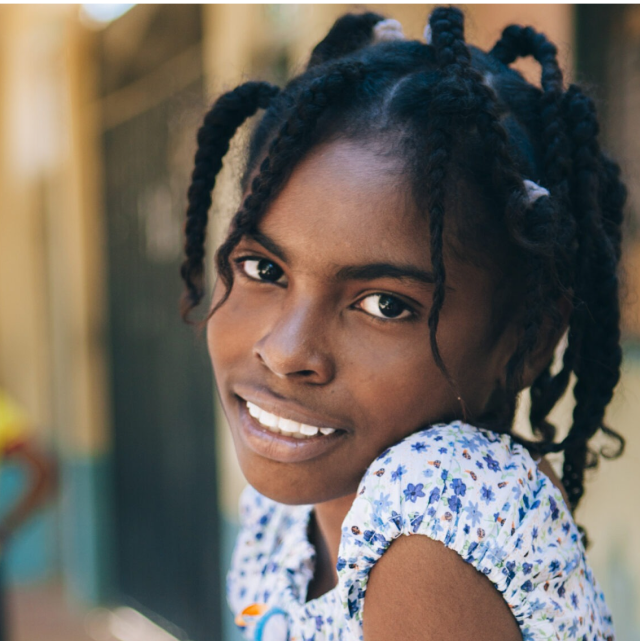Heavy Menstrual Blood Loss – A missing piece in the anemia puzzle

As the nutrition community is galvanizing efforts to address anemia more effectively and holistically, it is becoming clear that reducing heavy menstrual blood loss is not seen as a possible solution. A recent commentary published in The Lancet recognizes the importance of this oversight and argues that “interventions to reduce menstrual blood loss are neglected and were overlooked by WHO” and “the contribution of menstruation and heavy menstrual bleeding to iron deficiency and anemia deserves wide recognition”[1].
But what do we know about the relationship between heavy menstrual bleeding and iron deficiency and anemia? Why is this determinant systematically discounted, and why does it deserve more attention? On Menstrual Hygiene Day, these are some of the questions we have decided to unpack throughout this blog, with a particular focus on adolescents.
It is estimated that the average woman will experience 500 menstrual cycles, spending approximately 10 years of her life menstruating. Up to one-third of women of reproductive age experience heavy menstrual bleeding, [2–4] which is defined as prolonged (>7 days) or excessive bleeding (≥80 mL per cycle), and is negatively associated with hemoglobin concentration and serum ferritin. This is problematic, as adolescent girls with heavy menses can suffer from effects including iron deficiency anemia and fatigue, resulting in limitations of their daily activities including access to education, as well as adverse impacts on their quality of life and psychosocial health [5]. Although women have had periods since the dawn of time, the lack of knowledge on menstrual blood loss volume and the contribution of heavy menstrual bleeding to iron deficiency and anemia is striking.
In many low- and middle-income countries (LMIC), lower intakes of iron rich foods, low bioavailability of those foods and decreased nutrient absorption are more common; as a result, female body iron stores may be depleted even with blood loss just over 60 mL per cycle [6]. In a context as such, interventions to reduce menstrual blood loss in adolescent girls gain importance as they may represent an important piece to the anemia puzzle. In fact, interventions aimed at reducing heavy menstrual blood loss could help girls meet their iron requirements, improve their overall quality of life, and prepare them for their first pregnancy.
In clinical practice, the decision to treat heavy menstrual bleeding is usually based on a woman’s self-reported symptoms and the effect of these on her quality of life rather than any objective assessment. However, self-perception of heavy menstrual blood loss poorly predicts actual blood loss of ≥80mL per cycle [7–9]. A very limited number of studies in LMIC have objectively measured menstrual blood loss volume. In a study in the Philippines, 11% of adolescent girls were classified as heavy bleeders [10]; in China, a study reported that among women aged 18-44, 20% had a heavy menstrual blood flow [11]; In Nigeria, heavy menstrual blood loss (12%) was found to be a major factor contributing to anemia (40%) among adolescents in a context where 60% of the girls had sufficient iron intake to prevent anemia[12]. To date, too little attention has been paid to understanding or ameliorating girls’ menstrual experiences, particularly in LMIC. This phenomenon has mostly been compounded by cultural taboos and gender inequality [13].
In clinical practice, the decision to treat heavy menstrual bleeding is usually based on a woman’s self-reported symptoms and the effect of these on her quality of life rather than any objective assessment. However, self-perception of heavy menstrual blood loss poorly predicts actual blood loss of ≥80mL per cycle [7–9]. A very limited number of studies in LMIC have objectively measured menstrual blood loss volume. In a study in the Philippines, 11% of adolescent girls were classified as heavy bleeders [10]; in China, a study reported that among women aged 18-44, 20% had a heavy menstrual blood flow [11]; In Nigeria, heavy menstrual blood loss (12%) was found to be a major factor contributing to anemia (40%) among adolescents in a context where 60% of the girls had sufficient iron intake to prevent anemia[12]. To date, too little attention has been paid to understanding or ameliorating girls’ menstrual experiences, particularly in LMIC. This phenomenon has mostly been compounded by cultural taboos and gender inequality [13].
The lack of substantial progress in anemia reduction urgently calls for new approaches to address anemia beyond improved coverage of nutrition interventions, including interventions to reduce menstrual blood loss (e.g., non-steroidal anti-inflammatory drugs, oral contraceptives or the levonorgestrel intrauterine device)[16]. Not only would a stronger focus on menstrual health and menstrual blood loss allow us to better ascertain the contribution of menstrual iron loss to iron deficiency and iron deficiency anemia, but anemia reduction strategies which overlook menstrual complaints are likely to be less attractive to adolescents [12].
Addressing menstrual health concerns can serve as a powerful tool to contribute more effectively to both adolescent nutrition and their sexual and reproductive health.
Sight and Life, Wageningen University & Research, ETH, and the Training Research Unit of Excellence in Malawi have been awarded a four-year grant by the Swiss National Science Foundation (SNSF) to conduct research on this topic among adolescent girls in Malawi.
References
- Critchley HO, Munro MG, Shakur-Still H, et al. Menstruation should not be overlooked in control of anaemia. The Lancet. 2021;397:26.
- Monsen ER. Iron nutrition and absorption: dietary factors which impact iron bioavailability. J Am Diet Assoc. 1988;88:786–790.
- Hurskainen R, Grenman S, Komi I, et al. Diagnosis and treatment of menorrhagia. Acta Obstet Gynecol Scand. 2007;86:749–757.
- Davis E, Sparzak PB. Abnormal uterine bleeding (dysfunctional uterine bleeding). 2018;
- Kulkarni R. Improving care and treatment options for women and girls with bleeding disorders. Eur J Haematol. 2015;95:2–10.
- Andrade A, Souza J, Shaw Jr S, et al. Menstrual blood loss and body iron stores in Brazilian women. Contraception. 1991;43:241–249.
- Magnay JL, O’Brien S, Gerlinger C, et al. Pictorial methods to assess heavy menstrual bleeding in research and clinical practice: a systematic literature review. BMC Womens Health. 2020;20:24.
- Warner PE, Critchley HO, Lumsden MA, et al. Menorrhagia I: measured blood loss, clinical features, and outcome in women with heavy periods: a survey with follow-up data. Am J Obstet Gynecol. 2004;190:1216–1223.
- Hallberg L, Hôgdahl A, Nilsson L, et al. Menstrual blood loss–a population study: variation at different ages and attempts to define normality. Acta Obstet Gynecol Scand. 1966;45:320–351.
- Cheong RL, Kuizon MD, Tajaon RT. Menstrual blood loss and iron nutrition in Filipino women. Southeast Asian J Trop Med Public Health. 1991;22:595–604.
- Gao J, Zeng S, Sun B, et al. Menstrual blood loss and hematologic indices in healthy Chinese women. J Reprod Med. 1987;32:822–826.
- Barr F, Brabin L, Agbaje S, et al. Reducing iron deficiency anaemia due to heavy menstrual blood loss in Nigerian rural adolescents. Public Health Nutr. 1998;1:249–257.
- Sommer M, Sahin M. Overcoming the taboo: advancing the global agenda for menstrual hygiene management for schoolgirls. Am J Public Health. 2013;103:1556–1559.
- Sommer M, Sahin M. Overcoming the taboo: advancing the global agenda for menstrual hygiene management for schoolgirls. Am J Public Health. 2013;103:1556–1559.
- Harvey LJ, Armah CN, Dainty JR, et al. Impact of menstrual blood loss and diet on iron deficiency among women in the UK. Br J Nutr. 2005;94:557–564.</p>
- Fazio-Tirrozzo G, Brabin L, Brabin B, et al. A community based study of vitamin A and vitamin E status of adolescent girls living in the Shire Valley, Southern Malawi. Eur J Clin Nutr. 1998;52:637–642.
- Mwangi MN, Mzembe G, Moya E, et al. Iron deficiency anaemia in sub-Saharan Africa: a review of current evidence and primary care recommendations for high-risk groups. Lancet Haematol. 2021;
Read next
Discover more
News & announcements
Find out what is new at Sight and Life
Multimedia
Explore our videos, podcasts, and infographics







